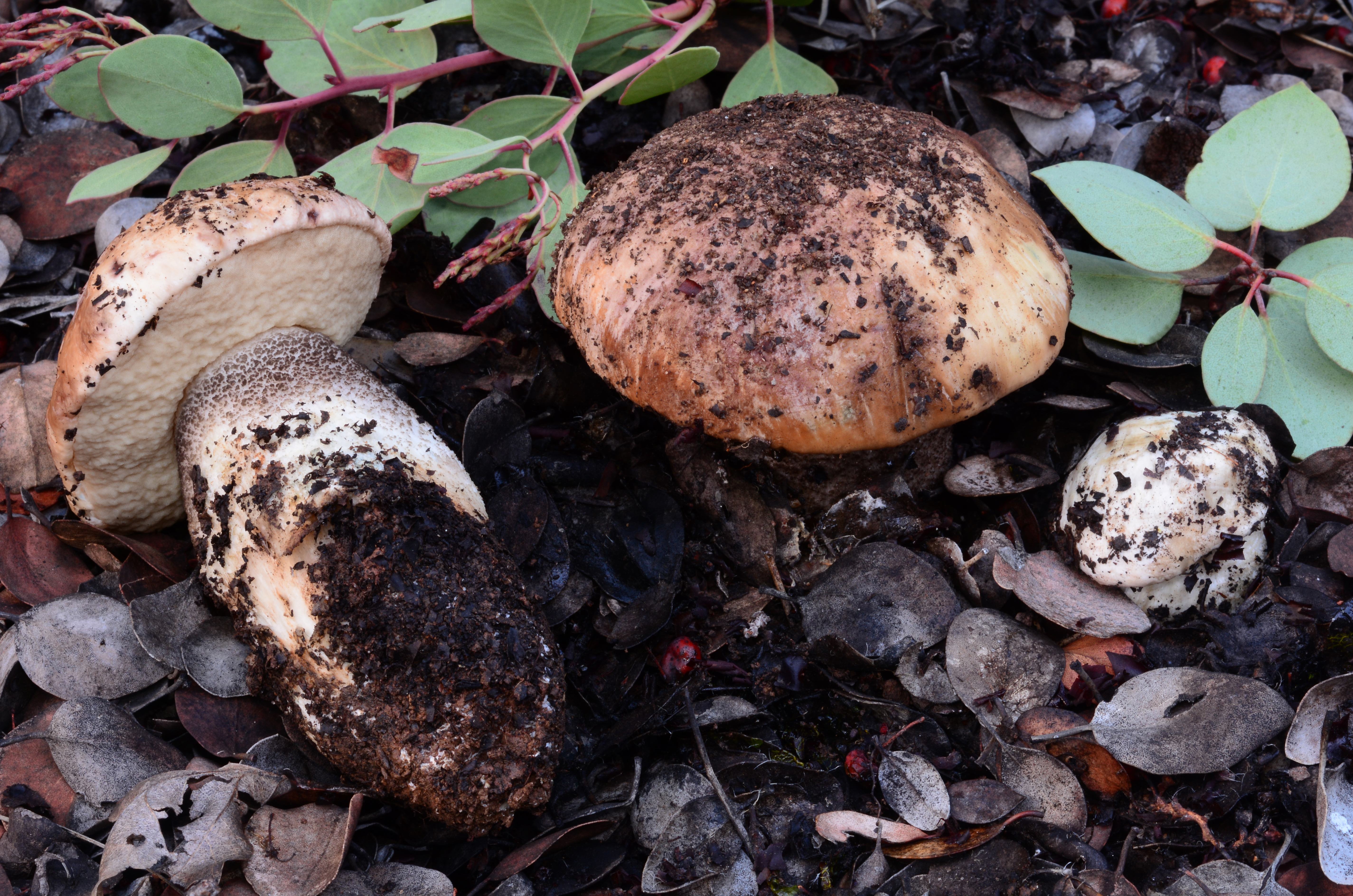- Proposed
- Under Assessment
- Preliminary Assessed
- DDAssessed
- Published
Leccinum arbuticola Thiers
- Scientific name
- Leccinum arbuticola
- Author
- Thiers
- Common names
- IUCN Specialist Group
 Mushroom, Bracket and Puffball
Mushroom, Bracket and Puffball- Kingdom
- Fungi
- Phylum
- Basidiomycota
- Class
- Agaricomycetes
- Order
- Boletales
- Family
- Boletaceae
- Assessment status
- Published
- Proposed by
- Noah Siegel
- Assessors
- Gregory Mueller, Noah Siegel
- Comments etc.
- James Westrip
Assessment Notes
Justification
Leccinum arbuticola is a bolete which grows with Madrone and Manzanita. Most records come from the Nevada City-Grass Valley area in the Sierra Nevada foothills of California, with other scattered locations in the Sierra Nevada foothills.
Currently known from 31 collections, from nine locations but all but three of the of the records are over 30 years old. However, this species comes from an area which has been poorly surveyed for fungi in the past 40 years. Efforts should be made to locate this species, and assess trends. As it is currently not possible to estimate if this species is under severe decline, or is severely undersampled and is more common and occurs over a much wider distribution thought its host plants range, it is assessed as DD.
Taxonomic notes
Described based on collections made in Nevada County, California, USA (Thiers 1975).
Why suggested for a Global Red List Assessment?
Leccinum arbuticola is a bolete which grows with Madrone and Manzanita. Most records come from the Nevada City-Grass Valley area in the Sierra Nevada foothills of California, with other scattered locations in the Sierra Nevada foothills.
Recognizable by the combination of cap color, pale scabers on the stipe when young (darkening in age), blue staining (especially on the stipe), and growth with ericaceous host.
Currently known from 31 collections, from nine locations; all but three of the of the records are over 30 years old. However, this species comes from an area which has been poorly surveyed for fungi in the past 40 years. Efforts should be made to locate this species, and assess trends. Until such time, I recommend listing this species as Data Deficient (DD).
Geographic range
Currently known from California, USA; from the Sierra Nevada foothills, a single record from interior Mendocino County.
Reports from Mexico (Mycoportal 2024) likely represent a distinct species, and are not included in this assessment.
Population and Trends
Currently known from 31 collections, from nine locations; all but three of those records are older than 30 years (Mycoportal 2024). It is not clear if the lack of recent collections represents a lack of people looking for, and correctly identifying this species versus a dramatic decline in its population.
Habitat dominated by Madrone and Manzanita is widespread, more data are needed to identify the additional factors comprising suitable habitat for this species. The zone this species occurs is subjected to sporadic rainfall, and these areas can go years before receiving adequate rainfall to produce sporocarps. Taking a precautionary view, it can be assumed that the species is in decline.
Population Trend: Decreasing
Habitat and Ecology
Ectomycorrhizal with Madrone (Arbutus menziesii) and Manzanita (Arctostaphylos spp.), scattered fruitbodies produced in fall and early winter, typically covered with leaves and debris.
Threats
Too little is known regarding this species’ distribution and details of its habitat preferences to properly assess possible threats. Habitat dominated by Manzanita is widespread, more data are needed to identify the additional factors comprising suitable habitat for this species.
Conservation Actions
No specific conservation actions can be identified with regards to this species at this time.
Research needed
Targeted surveys for this species. Better understanding of habitat restraints. Modern taxonomic work on Leccinum in California.
Use and Trade
Most Leccinum species are edible; and being difficult to identify past genus level, many are indiscriminately eaten.
Bibliography
MyCoPortal. 2024. Mycology Collections Portal. Available at: http://mycoportal.org
Siegel, N., Vellinga, E.C., Schwarz, C., Castellano, M.A. and Ikeda, D. 2019. A Field Guide to the Rare Fungi of California’s National Forests. Bookmobile: Minneapolis, MN. 313 p.
Thiers, H.D. 1975. California Mushrooms A Field Guide to the Boletes. Hafner Press.
Country occurrence
Regional Population and Trends
| Country | Trend | Redlisted |
|---|
